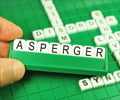Highlights
- Ten percent of the world's population suffer from dyslexia
- Dyslexia can be detected very early in young children by measuring their hearing capacity
- At present, we have to wait for the child to reach a minimum age of 9 years to diagnose the disorder
- This early detection method could help in the development of various training programs which aim to palliate this disorder
This breakthrough, published in Frontiers in Psychology, casts light upon the detection of the disorder and could help establish the risk of dyslexia from an early stage, as well as develop training programs to palliate reading limitations on a pre-emptive basis.
"The capacity of children to listen and process language is a decisive factor in learning to read", explains Paula Ríos-López, the supervisor of the study and a research member of the BCBL. At present, we must wait for children to reach 9 years of age in order to diagnose dyslexia.
However, the results of the San Sebastián centre imply that measurement of hearing capacity in children from a very early age may allow us to identify those individuals that might have reading problems and therefore be more susceptible to dyslexia.
Furthermore, different training activities could be implemented before 9 years of age, based on prosody (accents, tone and intonation) and language rhythms, together with programmes designed to palliate reading difficulties.
Rhythm may play an important role in diagnosing the Dyslexia
The experiment showed that this word was better understood when preceded by phrases produced only with prosodic information, i.e., in which the information only consisted of rhythms and intonations, with no phonemes of any kind.
As explained by the expert, those children that yielded poorer scores in the reading skill test were those that received most help from the phrase with prosodic information to successfully understand and repeat the pseudo-word.
In this sense, children that do not optimally process low frequency sounds (tones, accents and intonations of speech) have greater difficulty correctly decoding phonemes and words - and this in turn is directly correlated to reading capacity and its possible disorders.
"Rhythm offers the brain the key to focalising auditory attention in moments when information relevant to speech perception appears", explains Ríos-López.
"When the brain predicts the appearance of such information, an excitable state is produced, with the recruitment of neurons destined to adapt to it", she concludes.
Reference
- Paula Ríos-López, Monika T. Molnar, Mikel Lizarazu and Marie Lallier. The Role of Slow Speech Amplitude Envelope for Speech Processing and Reading Development, Frontiers in Psychology . 2017. DOI.org/10.3389/fpsyg.2017.01497
Source-Eurekalert











